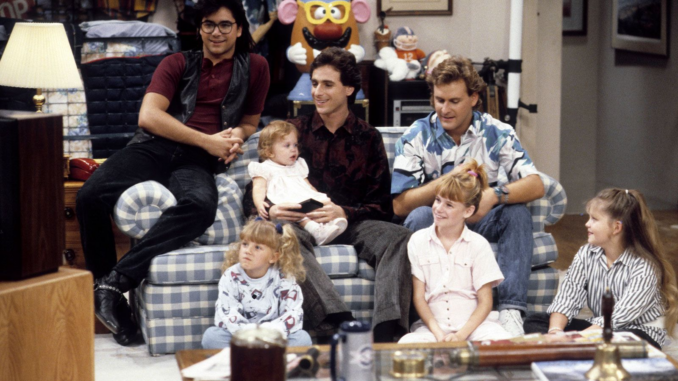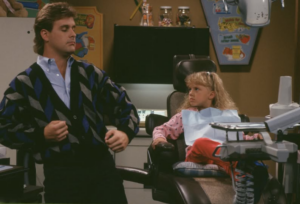
When we think of family sitcoms, a few iconic shows come to mind. Among them are The Brady Bunch, Full House, and Modern Family—each marking a significant era in the portrayal of family life on television. These shows, while all categorized under the ‘family sitcom’ genre, approach family dynamics, humor, and life lessons in unique ways. So, how do they compare? Are they more alike than different, or has the concept of the “ideal family” changed dramatically over the decades?
In this article, we’ll take a deep dive into how these classic family shows stack up against each other. From The Brady Bunch‘s wholesome charm to Modern Family‘s contemporary take on family life, we’ll explore the evolution of family sitcoms and what makes each of these shows stand the test of time.
The Brady Bunch: A Timeless Family Formula
The Brady Bunch first aired in 1969, during a time when traditional family values were at the forefront of American culture. The show centers around a blended family—Mike Brady, a widowed father with three sons, and Carol, a widow with three daughters. Together, they form the iconic Brady bunch.
Despite its sometimes overly simplistic plots, The Brady Bunch introduced the world to the concept of the blended family, a somewhat controversial subject for the time. The show’s wholesome, “all-American” portrayal of family life, with clear moral lessons and straightforward resolutions to family conflicts, made it an instant hit. The Bradys became the epitome of the perfect family, a model of love, discipline, and community, despite all their quirky adventures.
Full House: A Nostalgic Step Up from The Brady Bunch
In the 1980s, Full House took family television to new heights, capitalizing on the popularity of family-centric sitcoms but with a more modern twist. Unlike The Brady Bunch, which featured the traditional nuclear family, Full House followed the lives of Danny Tanner, a widowed father, who is helped by his brother-in-law and best friend in raising three daughters.
What made Full House stand out was its more relatable depiction of family struggles. While it still maintained a wholesome tone, it was more realistic in its portrayal of parental challenges, such as dealing with grief, single parenting, and sibling rivalry. The humor was a bit edgier, and the characters felt more like real people—making the show resonate with a broader audience.
Unlike The Brady Bunch, which was less focused on humor and more on life lessons, Full House blended comedy with heartwarming moments, creating a balance that still holds up to this day. The show emphasized the importance of love and support from family, even when things don’t go perfectly.

Modern Family: A Revolutionary Shift in Family Dynamics
Fast forward to the 2000s, and Modern Family redefined what it meant to be a family on television. The show, which premiered in 2009, was groundbreaking in its portrayal of diverse family structures, from traditional to same-sex couples, all while incorporating a mockumentary style that brought a fresh perspective to the genre.
Unlike The Brady Bunch and Full House, Modern Family embraced a more modern sensibility—characters were complex, the humor was sharper, and the issues the families faced were reflective of contemporary society. The show dealt with issues like parenting, divorce, adoption, and cultural differences, all with a comedic touch. Modern Family was far more inclusive and representative of the diverse American family, breaking away from the idealized norms that earlier shows had set.
Where The Brady Bunch was wholesome and predictable, Full House was slightly more daring but still tethered to the concept of a perfect family. Modern Family, however, felt more real. The show wasn’t afraid to explore the imperfections of family life, yet it still celebrated the love that holds families together—offering a perfect blend of humor and heart.
The Changing Face of the “Ideal Family”
What sets these three shows apart is how each one reflects the societal shifts and values of its time. The Brady Bunch showed us a picture-perfect family during an era when family values were seen as traditional and essential. As times changed, Full House adapted by showing the more complex and emotional sides of family life, with a little more humor and heart. Then, Modern Family came along and revolutionized family television, showing us a variety of family structures and bringing forward real-world issues in a way that had never been seen before.
The Humor Factor: How Do the Shows Compare?
Humor plays a significant role in family sitcoms, and all three of these shows have their unique comedic styles. The Brady Bunch leaned heavily on light-hearted, moral-driven humor, which was perfect for its time. The jokes were gentle, and conflicts were often solved with a simple lesson.
On the other hand, Full House had a broader range of comedic styles. It balanced slapstick humor, witty one-liners, and emotional moments. While the show had its “feel-good” moments, it wasn’t afraid to tackle difficult situations, such as death and divorce, and bring humor into the mix.
Modern Family brought in a more sophisticated, often sarcastic sense of humor, heavily relying on situational comedy and witty banter. The mockumentary style of filming allowed for breaking the fourth wall, where characters would often talk directly to the camera, adding another layer of humor and authenticity to their personalities.
Family Values in ‘The Brady Bunch’, ‘Full House’, and ‘Modern Family’
Despite their differences in comedic style, all three shows emphasized strong family values. The Brady Bunch was all about the importance of a united, traditional family, where every problem could be solved with love and support. Full House carried this forward but added a touch of realism, showing that family life isn’t always easy but always worth it.
Modern Family, however, took a more nuanced approach. It focused not only on the traditional concept of family but also celebrated the diversity of family structures, embracing single parents, same-sex couples, and multicultural backgrounds. The show was ahead of its time, normalizing different family dynamics and showing that love and togetherness are the true foundations of family, regardless of how it looks.
Conclusion: The Enduring Legacy of Family TV Shows
From The Brady Bunch to Modern Family, these shows have shaped our understanding of what family means. While The Brady Bunch provided a wholesome look at family life, Full House and Modern Family pushed the boundaries and explored more complex family dynamics. But all three share one thing in common: they remind us that, no matter the time period or the structure, family is a source of love, laughter, and support.
As we look to the future, it’s clear that the legacy of these shows will continue to influence how we view families on TV. Whether through the idealism of The Brady Bunch or the modern sensibilities of Modern Family, family sitcoms will always be a reflection of our society, evolving as we do.
FAQs
1. Why are family sitcoms like ‘The Brady Bunch’ still so popular?
Family sitcoms like The Brady Bunch continue to resonate because they present a version of the ideal family—a source of comfort and nostalgia. The simplicity of the show, with its clear morals and happy endings, provides a sense of stability that many people find appealing.
2. How did ‘Full House’ change the portrayal of families on TV?
Full House added complexity to family dynamics by introducing themes like single parenting, grief, and sibling rivalry. It showed that even perfect families face real-life challenges and that love and support are key to overcoming them.
3. What made ‘Modern Family’ so groundbreaking?
Modern Family was groundbreaking because it embraced diverse family structures, including same-sex couples, multi-generational households, and blended families. It portrayed family life as it is in today’s world, showcasing the humor and chaos of modern-day families.
4. How do ‘Full House’ and ‘The Brady Bunch’ compare in terms of family values?
Both shows emphasized strong family values, but Full House was more relatable, showing the challenges and imperfections of family life. The Brady Bunch, on the other hand, portrayed an idealized version of family life, focusing on the perfect family dynamic and moral lessons.
5. Which show is more realistic: ‘Full House’ or ‘Modern Family’?
Modern Family is arguably more realistic, as it tackles a wider variety of real-world issues like divorce, parenting, and cultural differences. Full House was realistic in its own way but was more focused on comedic and heartfelt moments with less emphasis on real-life struggles.
